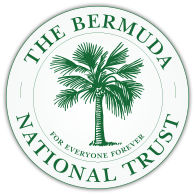Governing Early Bermuda
Students will undertake a field trip to St George’s where they will learn about the structure of Bermuda’s early parliament and the roles and responsibilities of the island’s leaders. They will visit St. Peter’s Church and State House as the sites of Bermuda’s first Assemblies, learn what and how Assizes worked, be introduced to some early forms of criminal punishment, and discuss some of the laws designed to oppress non-white islanders.
Module C, SS05-ECO01, 5.SS.E1a, 5SS.E1b and 5.SS.G2a
From Slavery to Emancipation
This is a three-part Learning Journey that can be delivered remotely or in person. During Session 1, students will learn about the development of slavery in Bermuda. Session 2 is a field trip to Verdmont, where students will meet Rachael, an enslaved woman owned by the Smith family. Students are guided through a comparison of the lives of the past owners and owned, who lived there and understand why Verdmont is a part of the African Diaspora Heritage Trail. Session 3 asks the students to reflect on their experience through the use of primary sources of evidence.
Module B, SS05-CIV03, SS.P5.C1
Module B, SS05-CIV04, SS.P5.C2d
Follow the Money: Maritime
This is a three-part Learning Journey that can be delivered remotely or in person. During Session 1, students examine the development of Bermuda’s maritime economy and the significant role of the island’s enslaved population in generating wealth. During Session 2 students will undertake a field trip to St. George’s to explore historically significant sites, including stores and the docks. A visit to the Globe Museum, centre of the Confederate supply chain, will introduce the students to blockade running and the wealth gained from this dangerous occupation.
Module C, SS05-ECO01, 5.SS.E1a, 5SS.E1b and 5.SS.G2a
Module C, SS05-ECO02, 5.SS.E3a
Bermuda’s Global Connections: The Gunpowder Plot
During a visit to Tucker House in St. George’s, students will learn about the significant role Bermuda played in the American War of Independence. Through portraiture, they will be introduced to the Tucker family, and listen to readings from the Tucker family letters, which bring to life Bermuda’s dire situation at the time. They will discover how the Gunpowder Plot was carried out, and the short and long-term consequences it had to the island and the global world.
Model A, SS04-GEO01, 5.SS.G2a
Remembering Our Past
The account of the brig Enterprise is brought to life during a field trip to St. George’s, where students also visit sites on the African Diaspora Heritage Trail, including the Free Black and Slave Cemetery at St. Peter’s Church, Mitchell House, Pilot Darrell’s House, Tucker House kitchen, and the Bermudian Heritage Museum.
Module B, SS05-CIV02, SS.P5.C2c, SS.P5.C2a and SS.P5.C2e
Following Emancipation: Friendly Societies
A field trip to St. George’s includes a talk about emancipation and the period following 1834. The legacy of the Somers Pride of India Lodge founder, Joseph Henry Thomas, will be introduced. Students will learn the vital role played by Friendly Societies in bringing education to newly emancipated children.
Module B, SS05-CIV03, SS.P5.C1
Module B, SS05-CIV04, SS.P5.C2d
Victorian Times at Verdmont
A field trip to Verdmont with a tour of the garden will have students learning about Bermuda during the Victorian era. They will be given an overview of the economic situation in the 1800s and think about some of the policies put in place by Governor Reid to improve the economy and wealth of the island and its inhabitants. Emphasis will be given to the story of Portuguese immigrants brought to the island to assist with sustainable living and agriculture.
Module C, SS05-ECO01, 5.SS.E1a, 5SS.E1b and 5.SS.G2a
Bermuda’s Plants: Seeds and Reproduction
We can learn a lot from experiencing a walk along the trails at Spittal Pond. Students will look for seeds dropped from shrubs and trees in the forest, and learn how the wind, birds and water help plant dispersal. They will focus on the reproduction of flowering plants, pollen, insect pollination and germination. Photosynthesis of mosses, ferns and flowering plants will also be discussed.
P5 5Eo1; 5Bp1, 5Bp2, 5Bp3, 5Bp4, 5Bp5
Endemics and Invasives
Take a field trip to Spittal Pond or Paget Marsh to learn about the difference between endemic, native, introduced and invasive plants. The pros and cons of plant importation, and the effect of the introduction of plant pests and diseases, will be discussed.
P5 5Eo1
